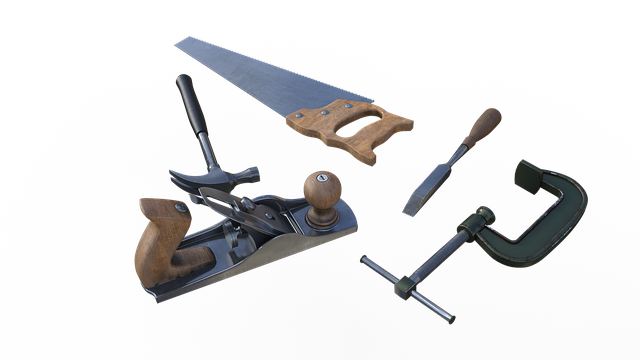Hydraulic Frame Machines: Enhancing Repair Accuracy and Safety
Hydraulic frame machines are specialized automotive equipment crucial for straightening and reshapin…….
Welcome to an in-depth exploration of the remarkable world of hydraulic frame machines, a technology that has revolutionized various industries worldwide. This article aims to unravel the complexities of this innovative equipment, its applications, and its profound impact on global manufacturing, construction, and engineering sectors. By delving into its history, components, global reach, and future potential, we will uncover why hydraulic frame machines are an indispensable asset in modern industry.
Definition: A hydraulic frame machine is a powerful industrial equipment utilized for precise manipulation and movement of heavy objects through the application of hydraulic power. It consists of a complex system of pumps, cylinders, valves, and actuators designed to generate substantial force and control.
Key Components:
Historical Perspective: The concept of hydraulic systems dates back to ancient civilizations like the Greeks and Romans, who used water power for simple tasks. However, modern hydraulic frame machines evolved in the 20th century with significant advancements in engineering and manufacturing. The post-World War II era saw a surge in demand for heavy equipment, leading to the development of more robust and versatile hydraulic systems.
Significance: Hydraulic frame machines are pivotal in industries requiring heavy lifting, positioning, and assembly. Their ability to exert precise control over significant force makes them invaluable for tasks such as:
International Influence: The global hydraulic frame machine market is a testament to its universal appeal. According to a 2022 report by Market Research Future (MRFR), the market is projected to reach a staggering $13,475.6 million by 2027, growing at a robust CAGR of 8.5% from 2020 to 2027. This growth is driven by increasing demand from various sectors worldwide.
Regional Dynamics:
Trends Shaping the Future:
Market Analysis: The global hydraulic frame machine market is highly competitive, with numerous players offering specialized solutions. Key manufacturers include Fanuc, Yaskawa, ABB, KUKA, and Terada, each catering to diverse industries and applications. This competition drives innovation and ensures a wide range of products to meet varying needs.
Investment Patterns: Significant investments in infrastructure development across regions have fueled the demand for hydraulic machines. Governments and private entities are allocating substantial funds for construction projects, driving market growth. Additionally, the adoption of Industry 4.0 principles and automation is boosting investment in advanced hydraulic systems.
Economic Impact:
Recent Breakthroughs:
Future Potential:
Key Policies: Governments worldwide have implemented regulations to ensure safety, environmental protection, and quality in hydraulic machine manufacturing and operation:
Legislative Frameworks:
Main Challenges:
Criticisms and Solutions:
Case Study 1: Construction Giant, China
A leading Chinese construction company faced the challenge of efficient concrete slab placement for a massive infrastructure project. They invested in state-of-the-art hydraulic frame machines equipped with precision positioning systems. This technology allowed them to achieve unprecedented speed and accuracy, reducing costs by 20% and completing the project ahead of schedule.
Case Study 2: Automotive Manufacturing, Japan
A Japanese automotive manufacturer adopted advanced hydraulic systems for their assembly line, enabling seamless integration of heavy components. The new system improved productivity by 30%, reduced downtime, and enhanced overall product quality. This case highlights the transformative power of hydraulic technology in manufacturing processes.
Case Study 3: Offshore Wind Farm, Europe
A European energy company utilized specialized hydraulic machines for constructing an offshore wind farm. These machines played a crucial role in lifting and installing massive turbine components in challenging marine environments. The successful project set a new benchmark for renewable energy infrastructure development.
Growth Areas:
Emerging Trends:
Strategic Considerations:
Hydraulic frame machines have undeniably left an indelible mark on modern industry, serving as powerful catalysts for growth and innovation. From their humble beginnings to the advanced technologies of today, these machines have evolved to meet the ever-changing demands of manufacturing, construction, and engineering. As we peer into the future, the potential for further transformation remains vast, with environmental sustainability, automation, and digital integration at the forefront.
By navigating the global landscape, embracing technological advancements, and addressing regulatory challenges, hydraulic frame machines will continue to shape industries worldwide. The case studies presented in this article serve as a testament to their versatility and impact. As we move forward, the focus on customization, sustainability, and collaboration will be key to unlocking the full potential of these remarkable machines.
Q: What are the primary applications of hydraulic frame machines?
A: Hydraulic frame machines are extensively used in construction for lifting and moving heavy objects, manufacturing for assembly and metal forming, and engineering for installing large equipment in infrastructure projects.
Q: How do hydraulic systems contribute to safety in industrial settings?
A: Hydraulic systems provide precise control over force, enabling operators to perform tasks with enhanced accuracy and safety. Advanced features like emergency stop mechanisms and operator training further mitigate risks.
Q: Are there any environmental concerns associated with hydraulic fluids?
A: Traditional hydraulic fluids may contain toxic substances, posing environmental risks if not disposed of properly. However, the industry is shifting towards eco-friendly alternatives and implementing recycling programs to address these concerns.
Q: Can hydraulic machines be controlled remotely?
A: Yes, remote control capabilities are a growing trend in hydraulic technology. This feature enhances safety and operational efficiency, especially in hazardous or confined spaces.
Q: What role does automation play in modern hydraulic systems?
A: Automation integrates sensors, AI, and machine learning to optimize performance, reduce downtime, and improve overall efficiency. It allows machines to work smarter, not harder, leading to increased productivity.

Hydraulic frame machines are specialized automotive equipment crucial for straightening and reshapin…….

Hydraulic frame machines are essential tools in auto body shops for precise vehicle frame alignment,…….

Hydraulic frame machines are essential tools for automotive structural repairs, offering precision i…….

Before using a hydraulic frame machine, conduct a thorough pre-use inspection focusing on structural…….

Hydraulic frame machines are versatile tools used across diverse sectors, including automotive and c…….

The hydraulic frame machine is a revolutionary tool in collision repair, offering precise and versat…….

Hydraulic frame machines are indispensable tools in automotive collision repair, offering unparallel…….